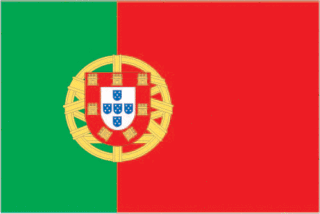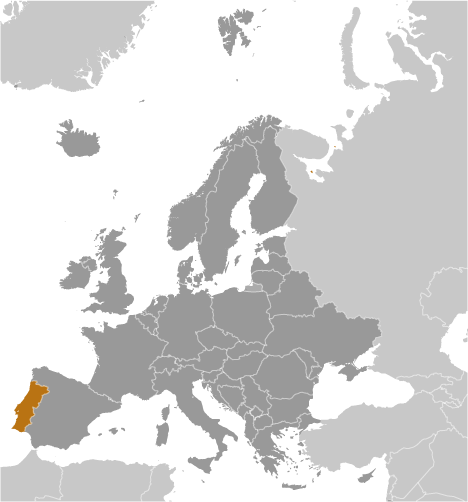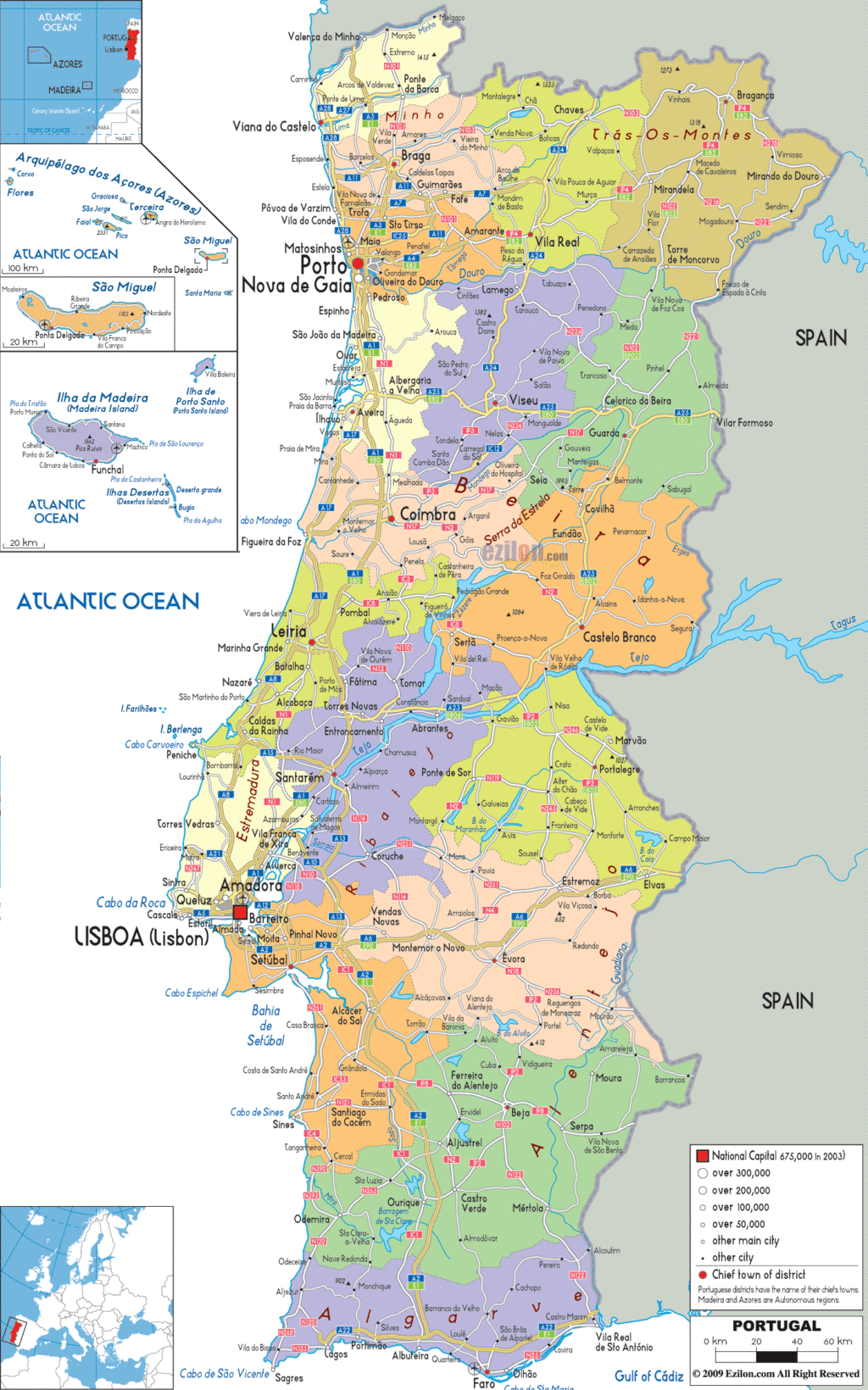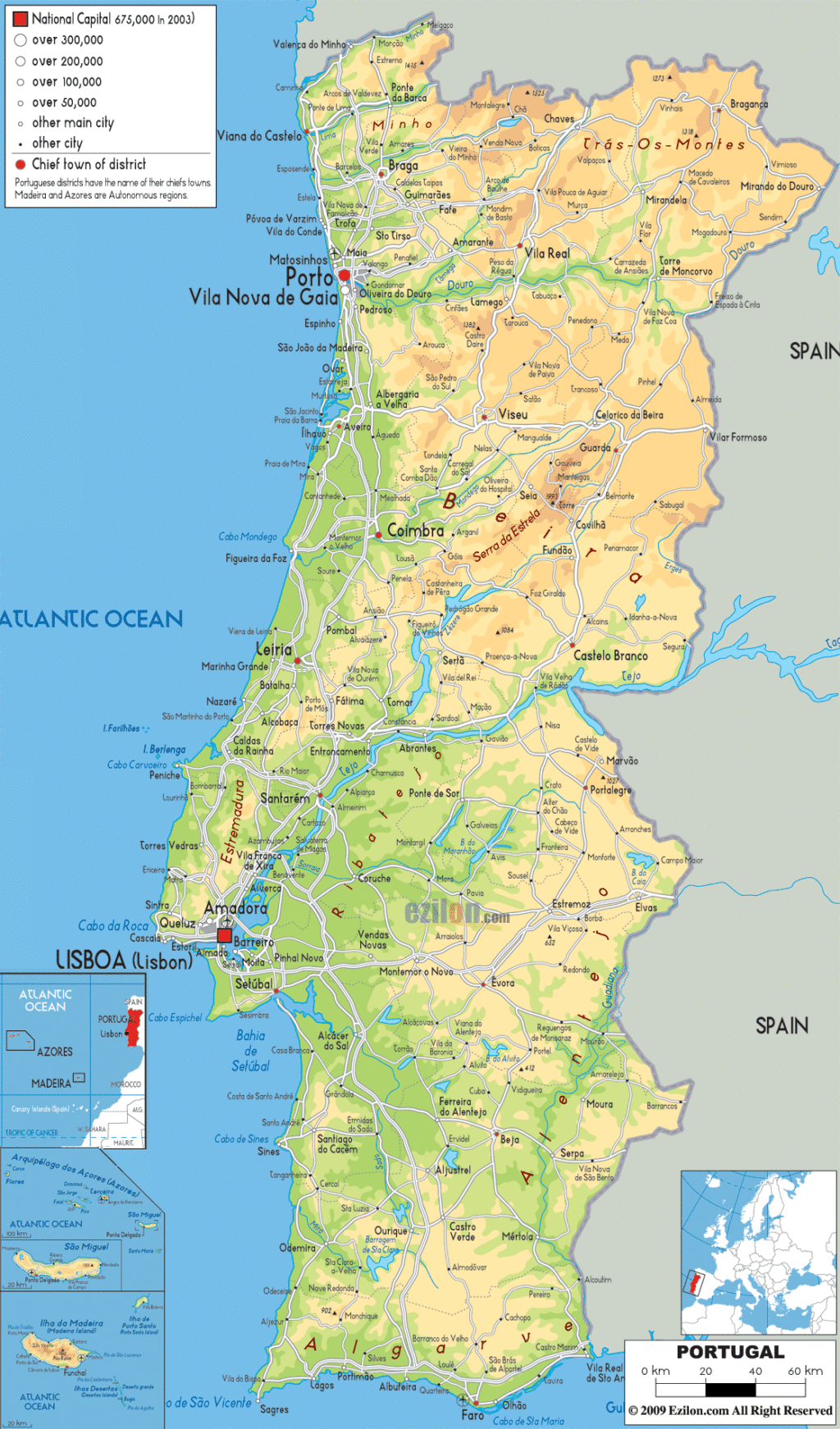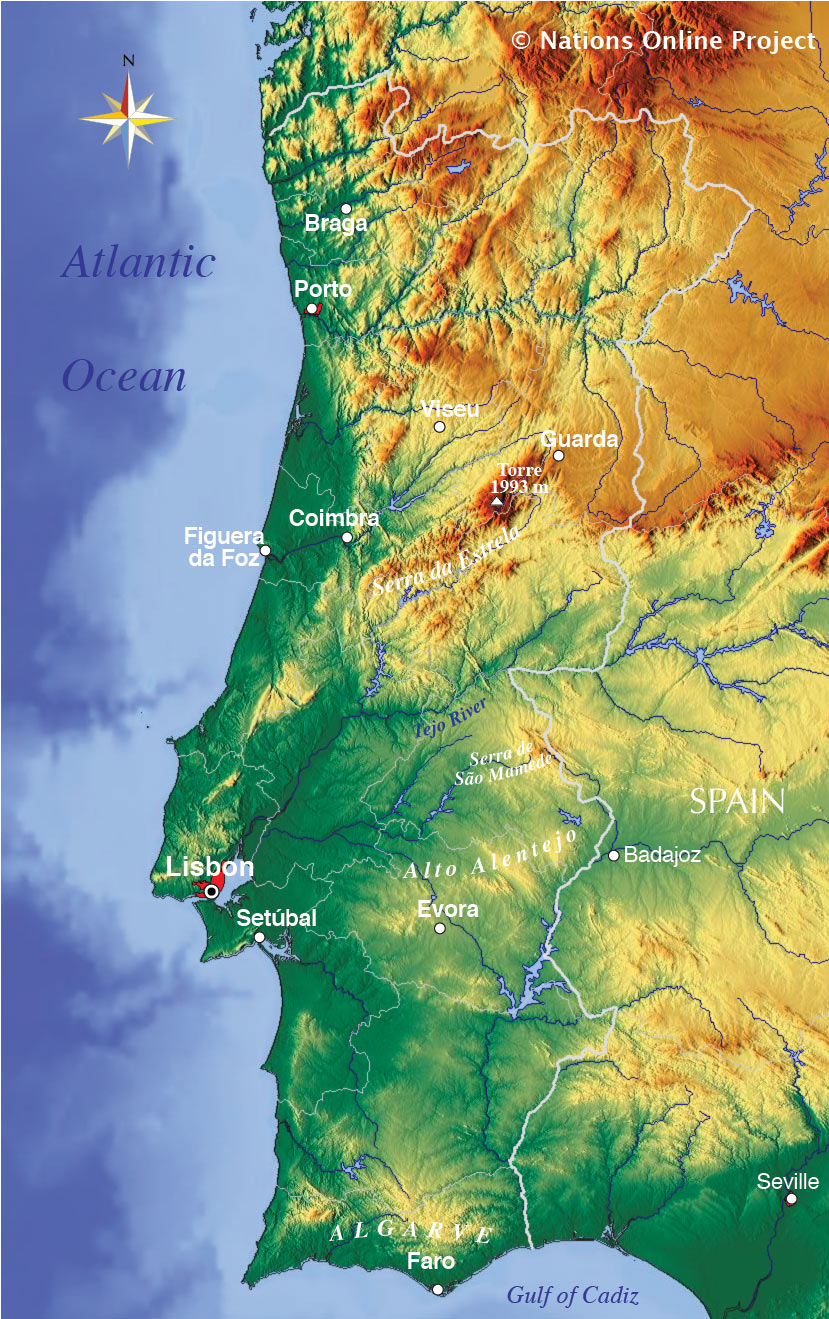Located mostly in the Iberian Peninsula of Europe, Portugal covers an area of 92,212 sq. km.
As observed on the physical map of Portugal above, mountains and high hills cover the northern third of Portugal, including an extension of the Cantabrian Mountains from Spain.
The mainland’s highest point is a peak in the Serra da Estrela, at 6,532 ft. (1,991m). Portugal’s lowest point is along the Atlantic Ocean coastline.
Note: Portugal’s overall highest point (Pico Volcano ) is located in the Azores (an autonomous region) on the island of Pico. It stands at 7,713 ft. (2,351 m).
Further south and west, the land slopes to rolling hills and lowlands, and a broad coastal plain.
Marked on the map is the Algarve region in the far-south that features mostly rolling plains, a few scattered mountains, and some islands and islets. Its coastline is notable for limestone caves and grottoes.
Major rivers in Portugal include the Douro, Guadiana, Mondego, and the Tagus. There are no inland lakes, as water surfaces of size are dam-originated reservoirs.
From the Douro River Valley to the Tagus River, Portugal is an amazing country with a variety of landscapes and features. This map of Portugal is a great way to explore the country and discover its hidden gems. From the vibrant capital of Lisbon to the picturesque beaches of the Algarve, Portugal has something for everyone. With its stunning mountain ranges, lush forests, and rivers, Portugal is an amazing country to explore.
Explore Portugal with this Map of Portugal
Discover the beauty of Portugal with this map of Portugal. This map highlights the country’s cities, highways, and rivers. Explore the Estrella Mountains and the Algarve region. From the Douro River Valley to the Tagus River, Portugal offers a variety of landscapes and features. Discover the vibrant capital of Lisbon and the picturesque beaches of the Algarve. With its stunning mountain ranges, lush forests, and rivers, Portugal is an amazing country to explore.
Online Interactive Political Map
Click on ![]() to view map in "full screen" mode.
to view map in "full screen" mode.
Portugal (officially, the Portuguese Republic) is divided into: 18 districts (distritos, sing. distrito) and 2 autonomous regions (regioes autonomas, sing. regiao autonoma). In alphabetical order, the districts are: Aveiro, Beja, Braga, Braganḉa, Castelo Branco, Coimbra, Evora, Faro, Guarda, Leiria, Lisboa (Lisbon), Portalegre, Porto, Santarem, Setubal, Viana do Castelo, Vila Real, and Viseu. The two autonomous regions are – Acores (Azores) and Madeira.
Located at the mouth of the Tabus River, along the coast of the Atlantic Ocean is, Lisbon – the capital and the largest city of Portugal. Lisbon is the westernmost capital city of the European mainland. It is also the administrative, cultural, economic and commercial center of Portugal. Lisbon also serves as Portugal’s chief port.
Location Maps
Where is Portugal?
Nestled on the Iberian Peninsula in southwestern Europe, Portugal is bordered by just one other European country – Spain – to the east. Portugal’s boundaries also include the Azores and Madeira Islands in the North Atlantic Ocean. Its 92,212 square kilometers (35,603 sq mi) of land make it almost identical in area to Hungary.
The country has a Mediterranean climate, featuring mild winters and warm, dry summers. Portugal’s landscape is diverse with its mountains, forests, and sandy beaches. Lisbon is the capital city of Portugal, with other major cities such as Porto, Braga and Coimbra.
High Definition Political Map of Portugal

Physical Map of Portugal

